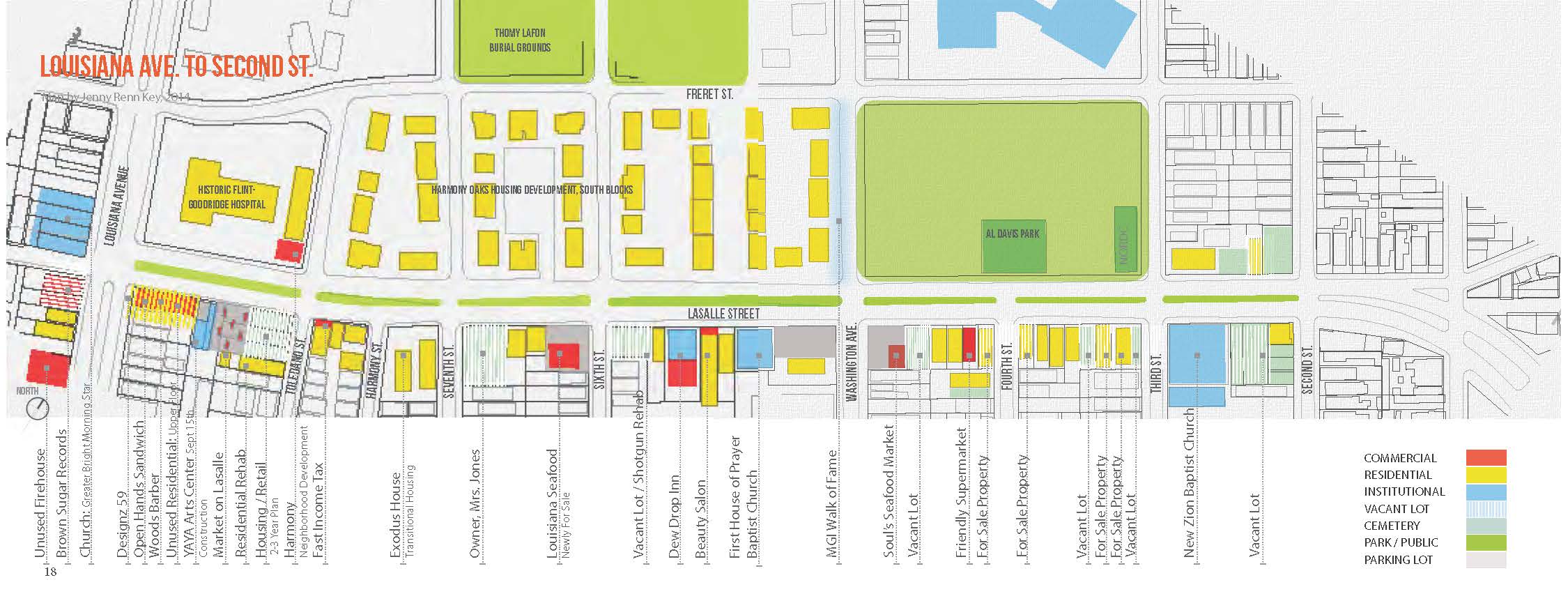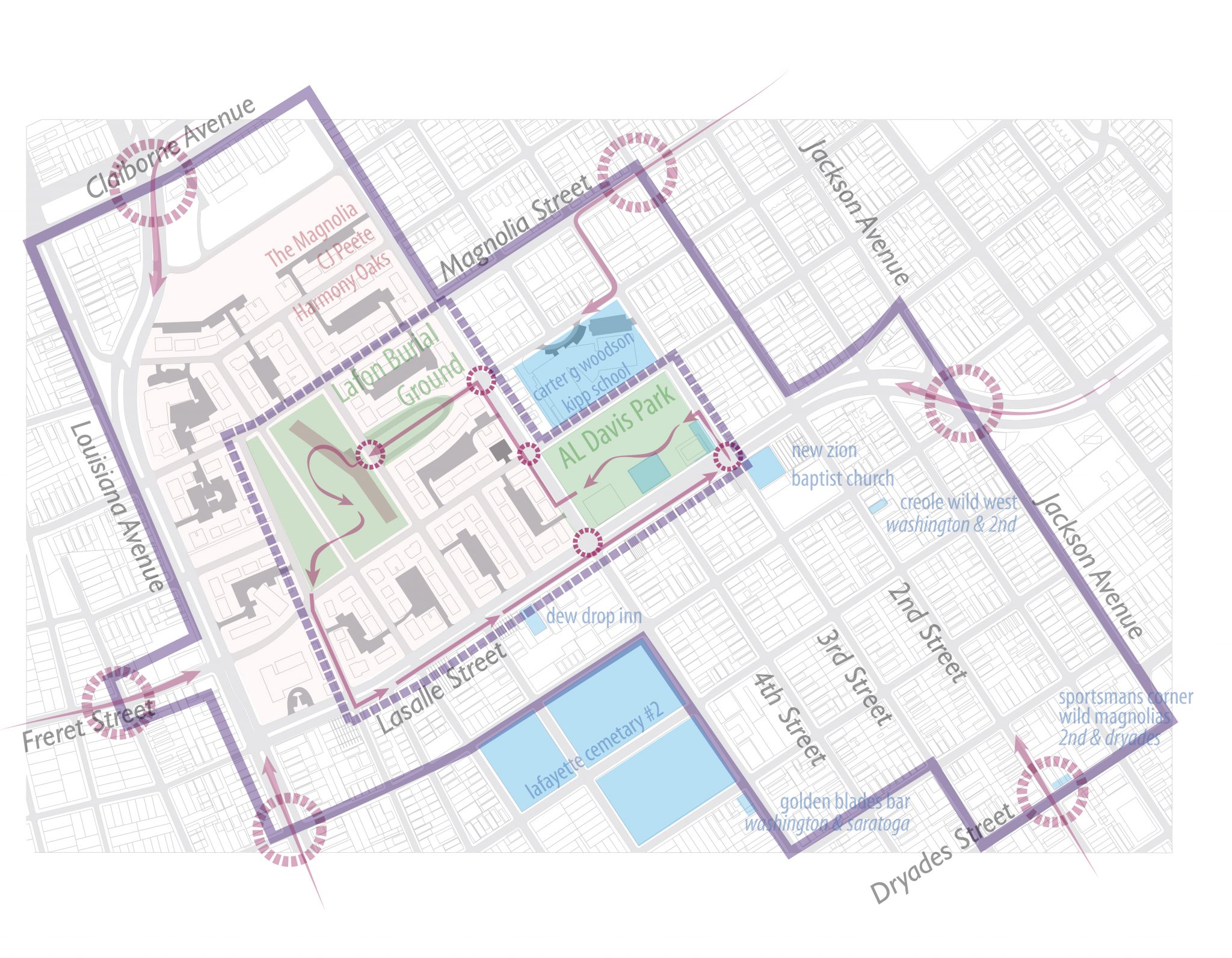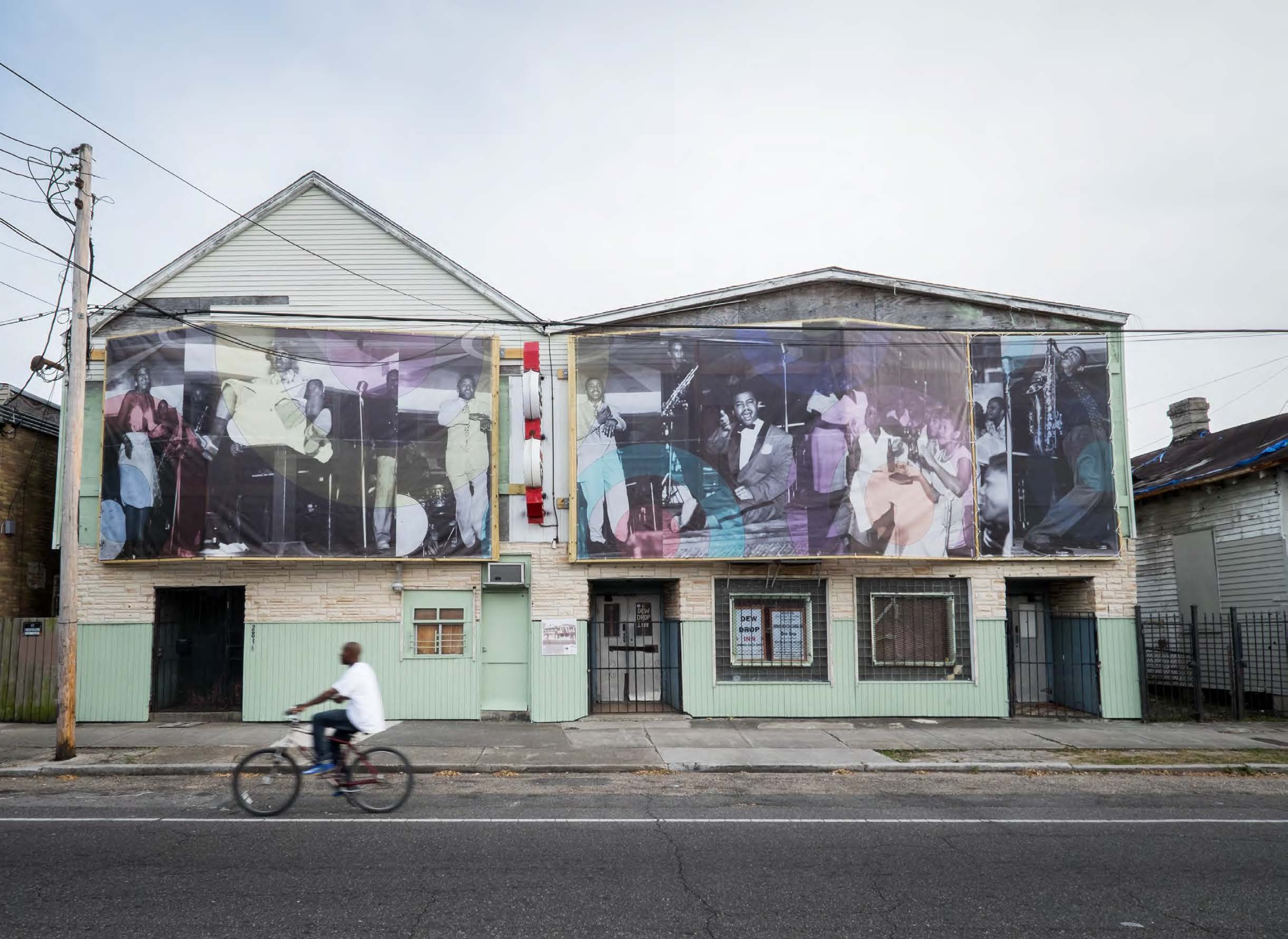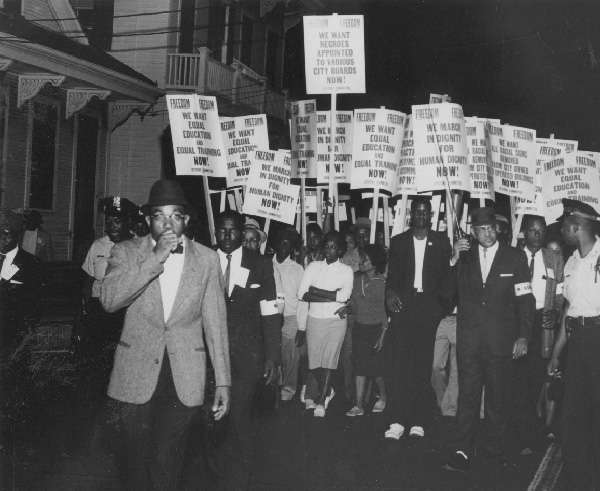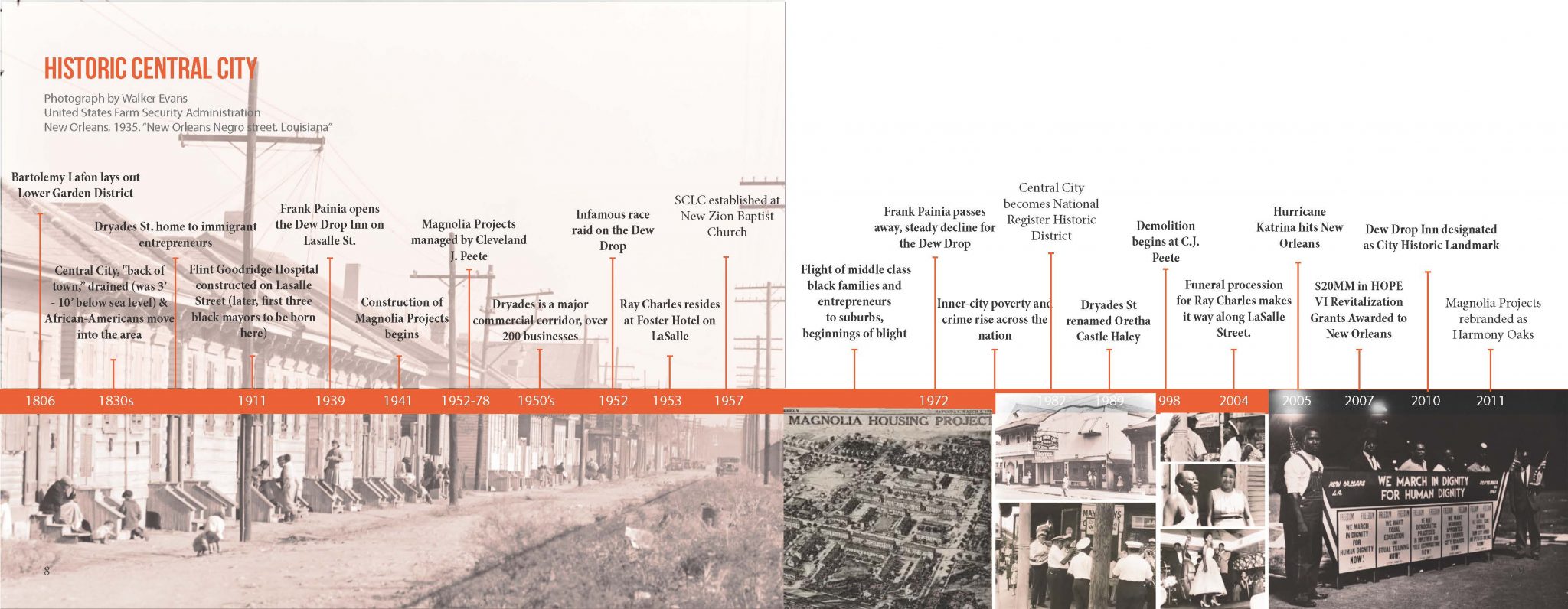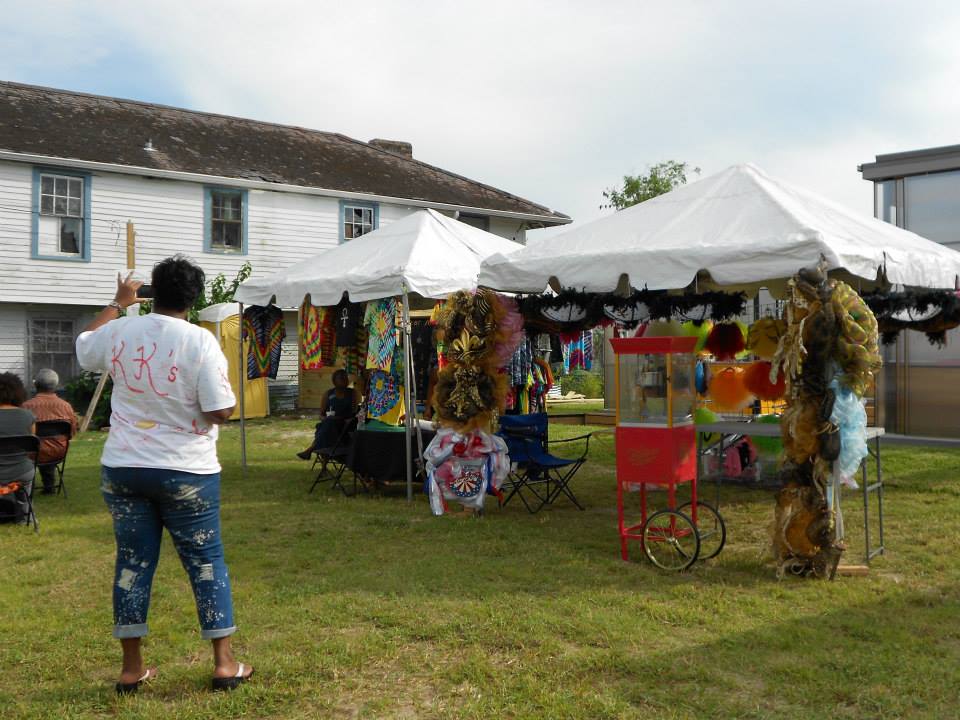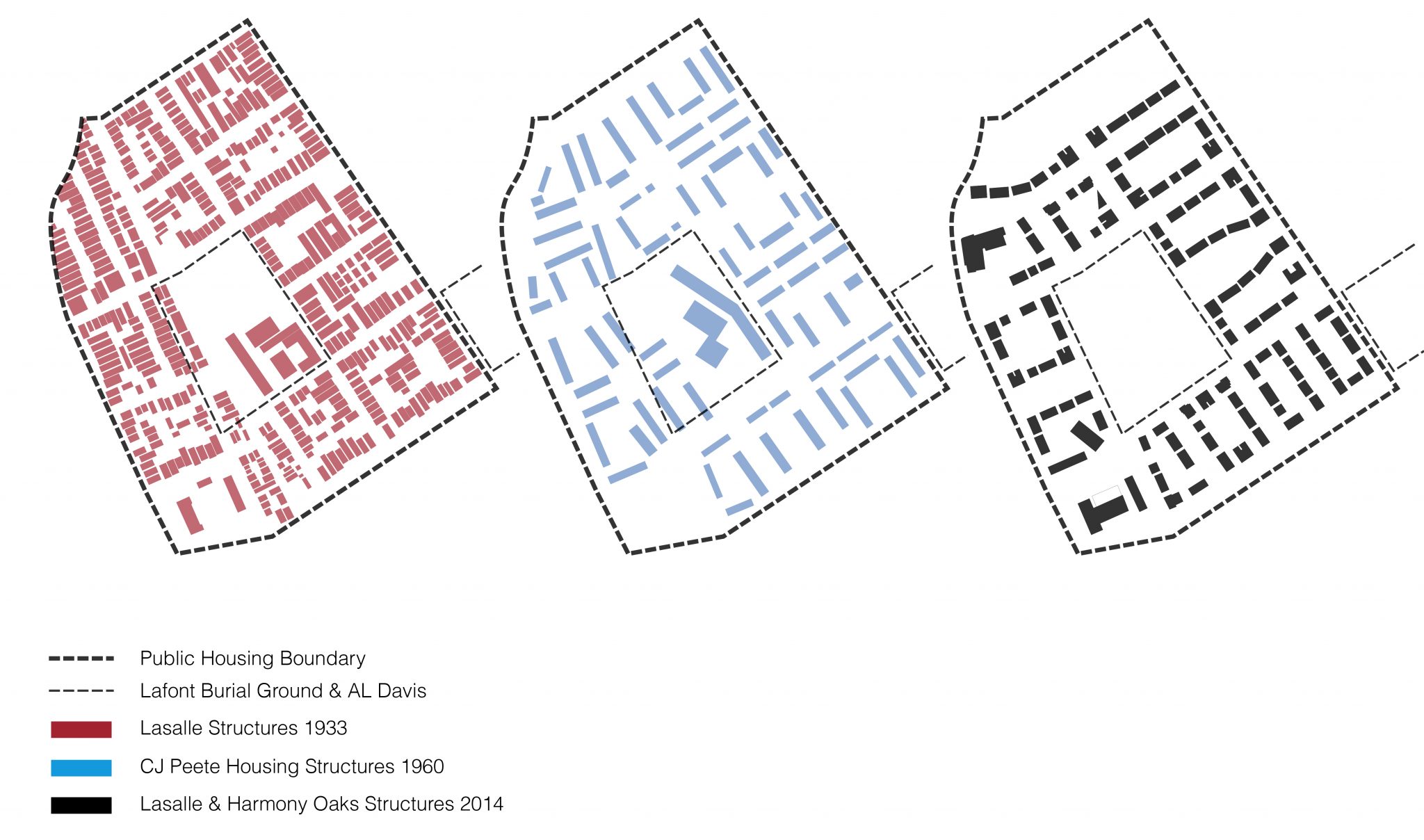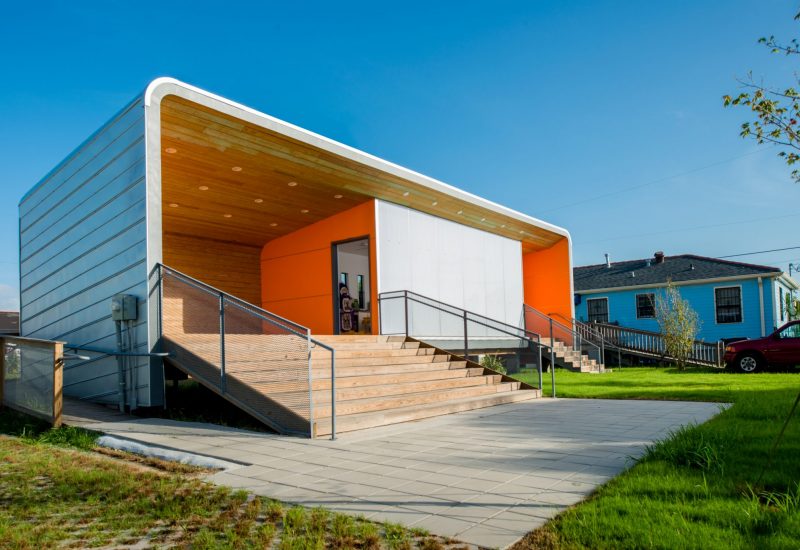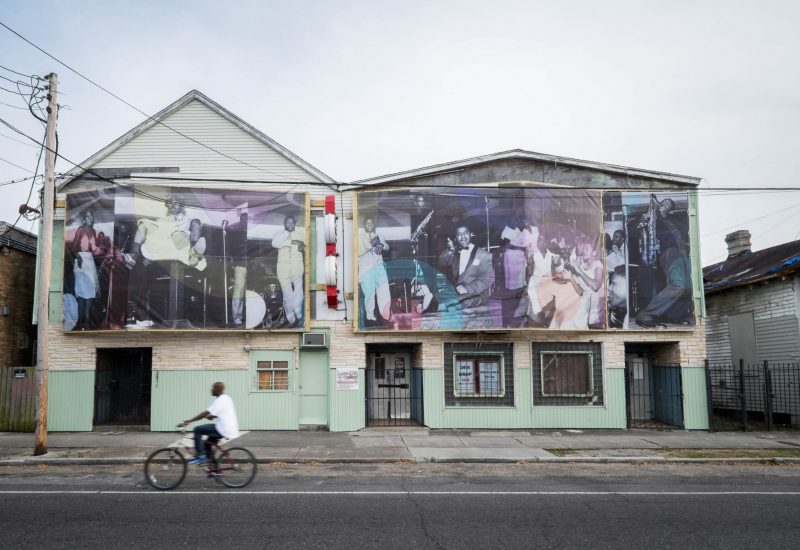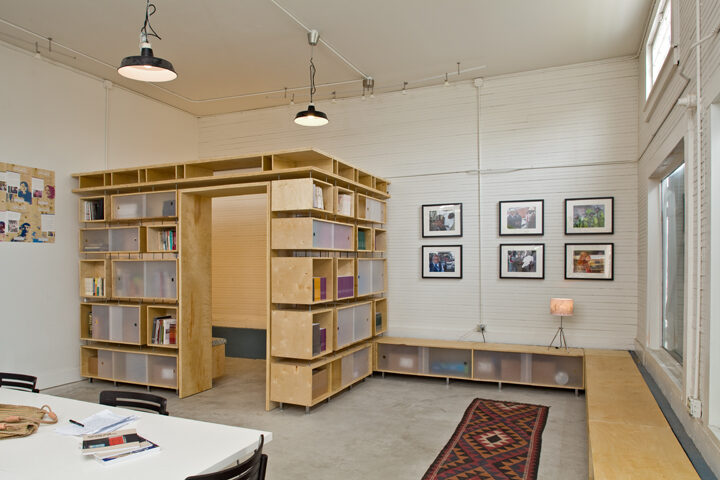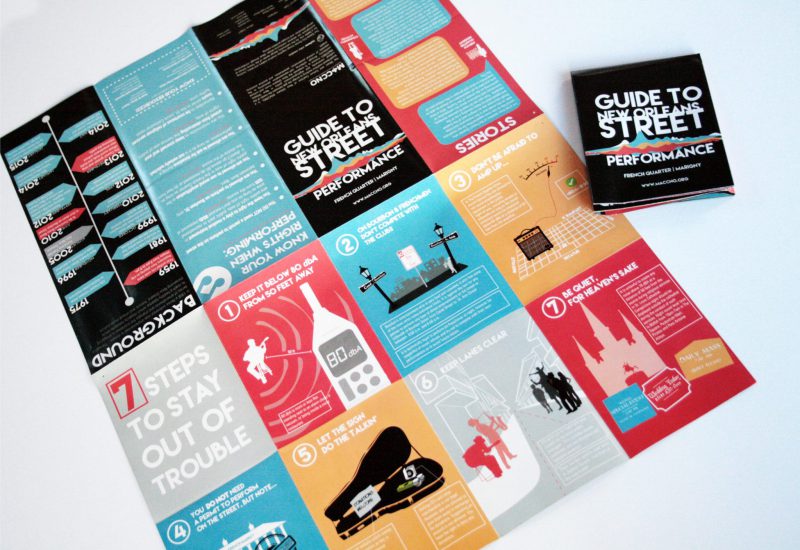LaSalle Street Cultural Corridor
Small Center partnered with cultural organizations along LaSalle Street to highlight and promote the historic and cultural assets of the Central City neighborhood and their importance in New Orleans.
Project Dates
January 2014–May 2015
Context
The LaSalle Corridor in Central City is richly layered with historic places and events; from the early nineteenth century to the Civil Rights Era, it has reflected and helped to define the African American experience in New Orleans. The narratives of LaSalle are those of reconstruction and Jim Crow, the challenges of the civil rights movement in the Deep South, and the promise and the limitations of public housing and the Great Society. Central City is known for its culture-bearers, including artists, musicians who got their start playing at the Dew Drop Inn, and of course the uptown tribes of the Mardi Gras Indians.
Redevelopment of this corridor is an on-going process, combining grassroots and top-down efforts to revitalize a unique street that features historic, cultural, and economic sites intermixed with residential lots. At its high point in the 1940s and ’50s LaSalle was a locus for African-American entrepreneurs, musicians, and political and social activists. As redevelopment brings change to the neighborhood, it is important to highlight the importance of and ensure the preservation of the cultural institutions that define LaSalle and Central City.
Small Center Engagement
Small Center worked with a robust, interdisciplinary team including Harmony Neighborhood Development, LSU’s Robert Reich School of Landscape Architecture, the University of New Orleans, the Mardi Gras Indian Council, and others. The team conducted historic research, gathered stories from local residents at public meetings, and surveyed the corridor to identify possible locations for community-led development opportunities, and to understand the needs of local businesses and residents.
Partner Organization
Legendary Chief Robbe (Robert Lee) founded The Mardi Gras Indian Council in 1985 to represent the Mardi Gras Indian tribes and preserve the unique New Orleans tradition of “masking Indian.”
Harmony Neighborhood Development was established in 1998 by a coalition of partners committed to re-energizing the city’s social, physical, and economic landscape.
Outcome
The project allowed cultural organizations along LaSalle Street promote the importance of the corridor to Central City and all of New Orleans. Click here to see a summary document. The study also informed Small Center’s collaboration with the Mardi Gras Indian Council to create a vision for a Mardi Gras Indian Cultural Campus.
Collaborators
Mardi Gras Indian Council
- Bertrand Butler
- Chief Howard Miller
- Chief Tyrone Casby
Harmony Neighborhood Redevelopment
- Una Anderson
- Charles Cutno
- Michael Hellier
LSU School of Landscape Architecture
- Austin Allen
University of New Orleans
- Amy Eulmer
- Kristyna Jones
- Kim Mosby
Foundation for Louisiana
- Alfredo Cruz
- Flozell Daniels
- Lucinda Flowers
Team Members
Project Leads
- Maurice Cox (Design Lead)
- Nick Jenisch (Project Manager)
Students
- Jenny Renn Key
- Kossen Miller (LSU)
- Matty Williams (LSU)
Staff
- Sue Mobley
- Maggie Hansen
- Emilie Taylor Welty
- John Coyle
- Dozenia Marshall
Support
- Foundation for Louisiana
- National Endowment for the Arts
Special Thanks
- Bertrand Butler


 Menu
Menu